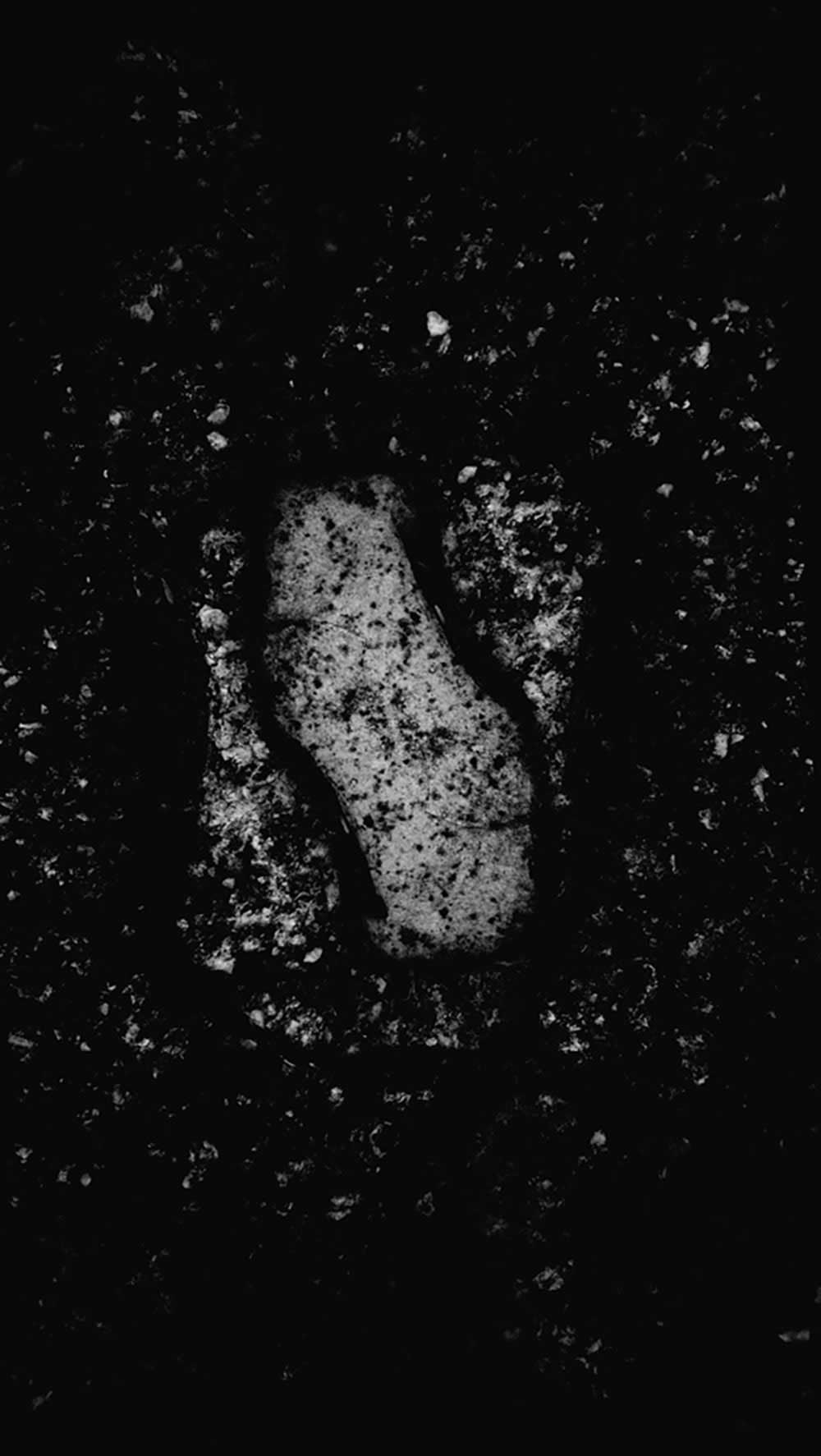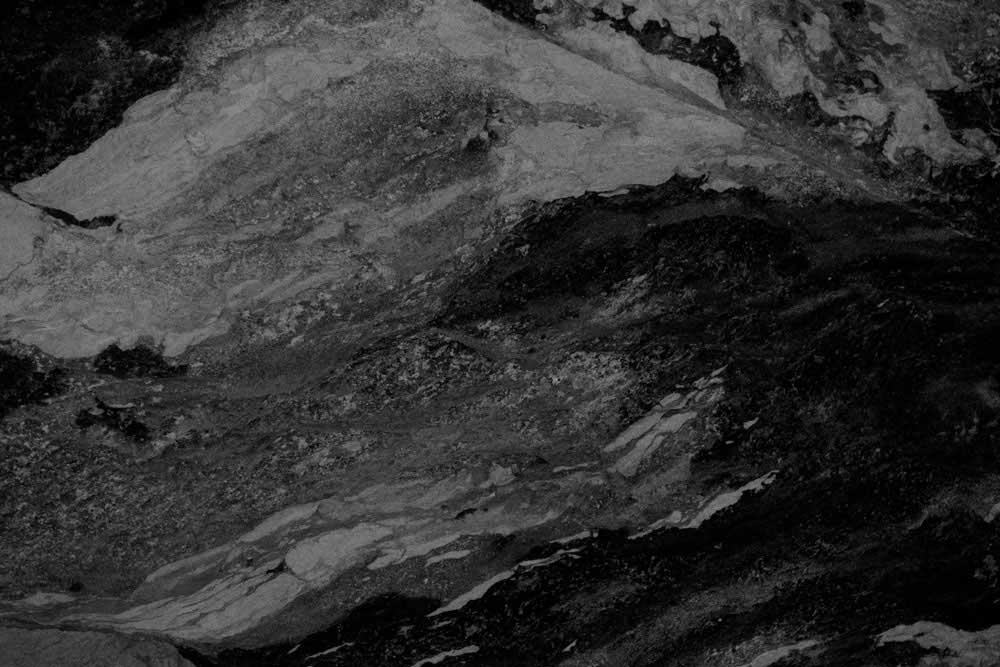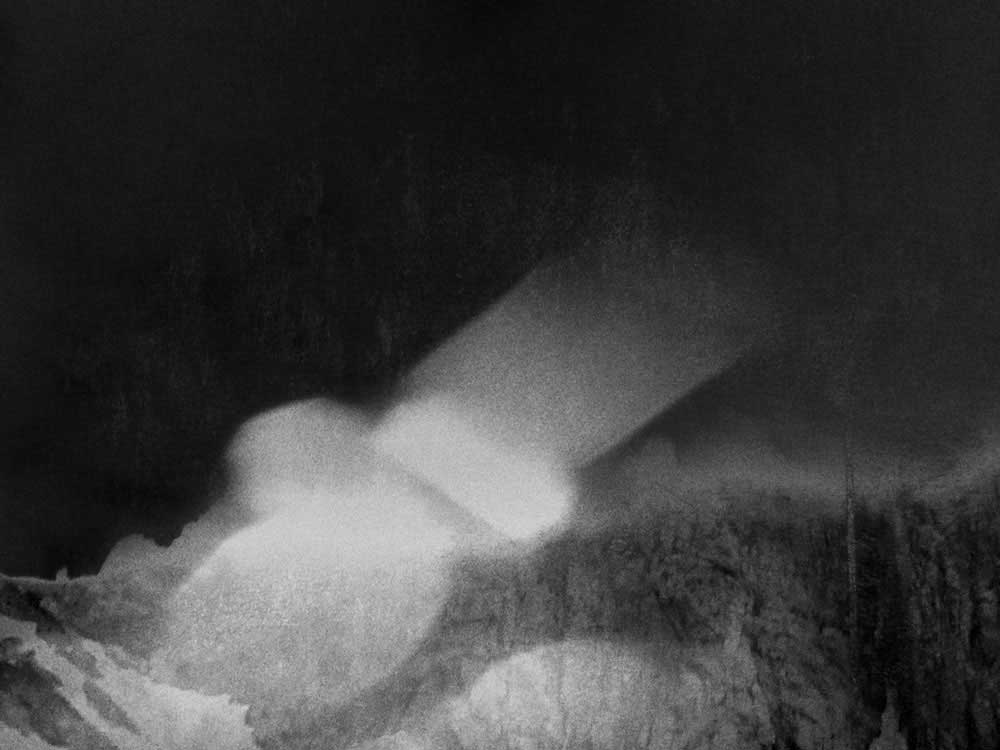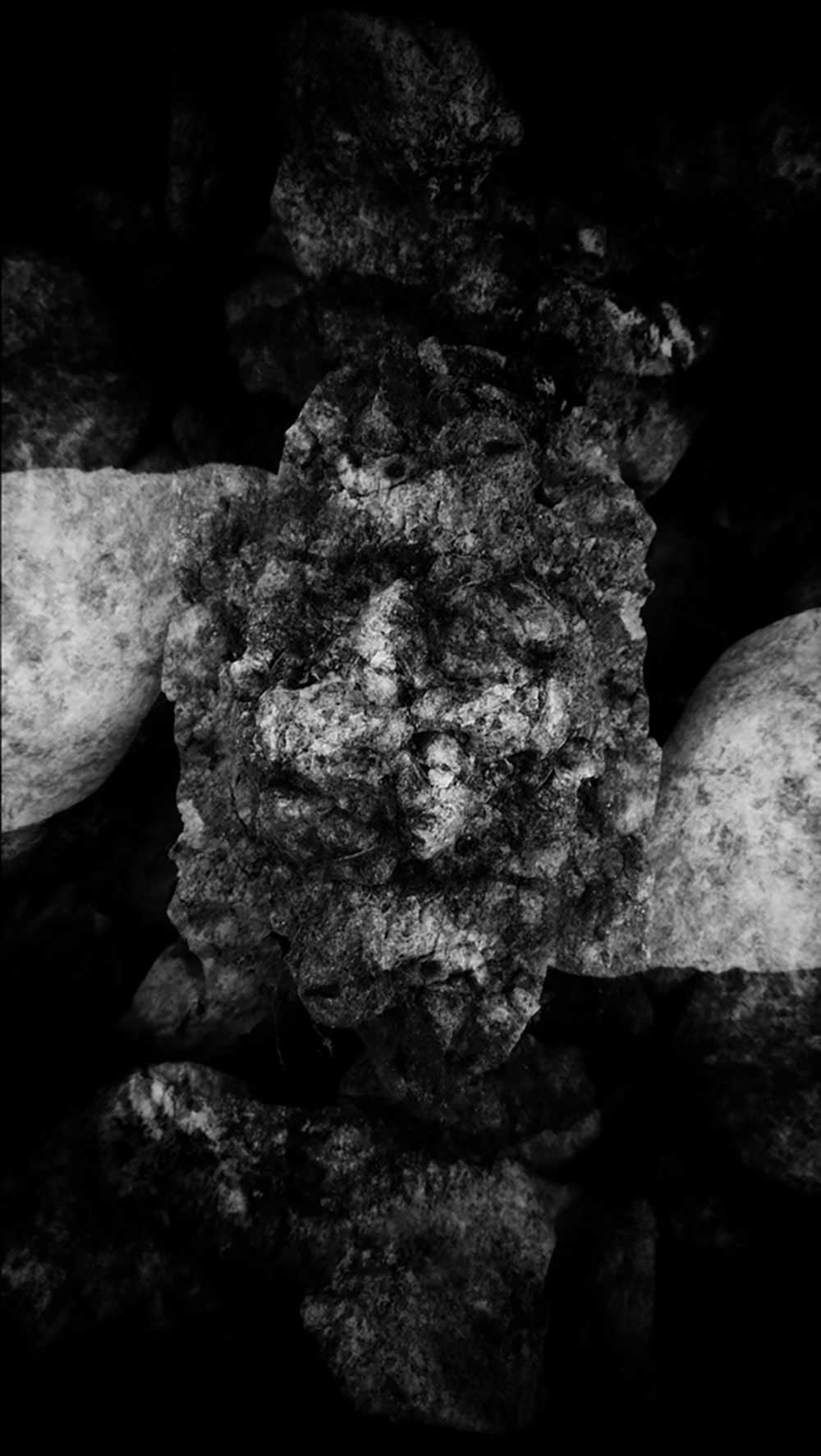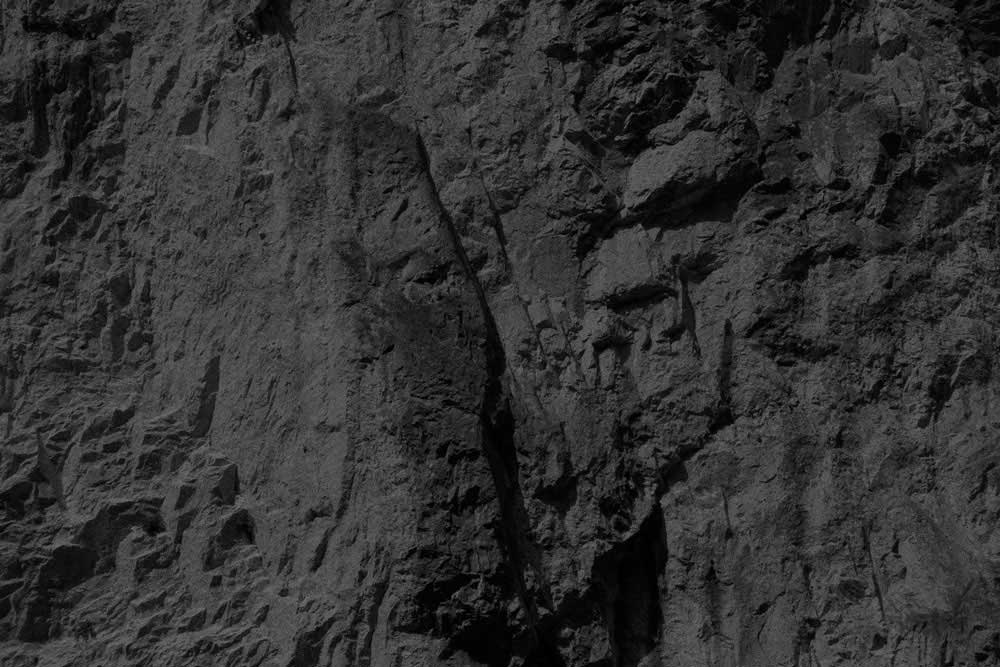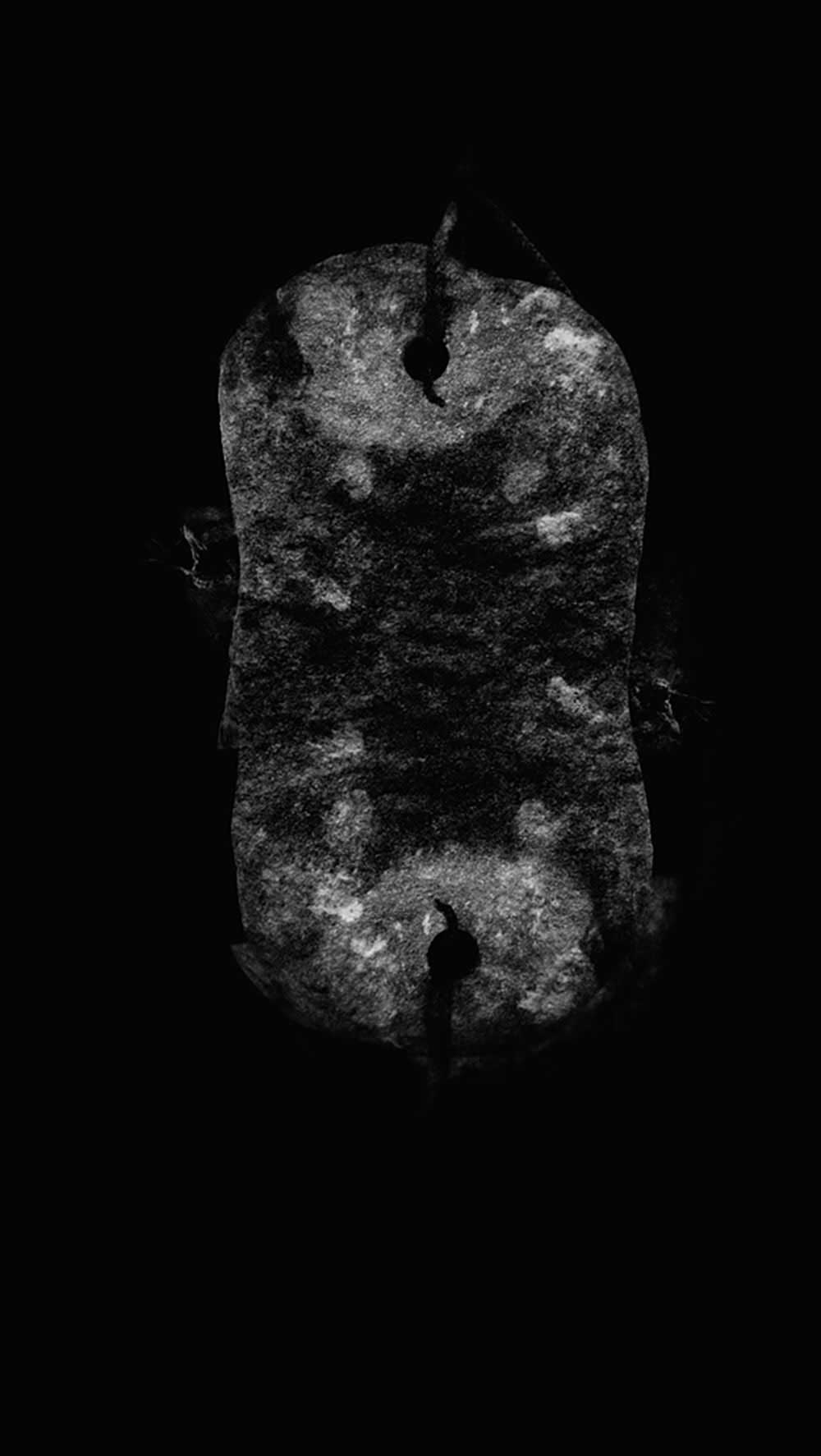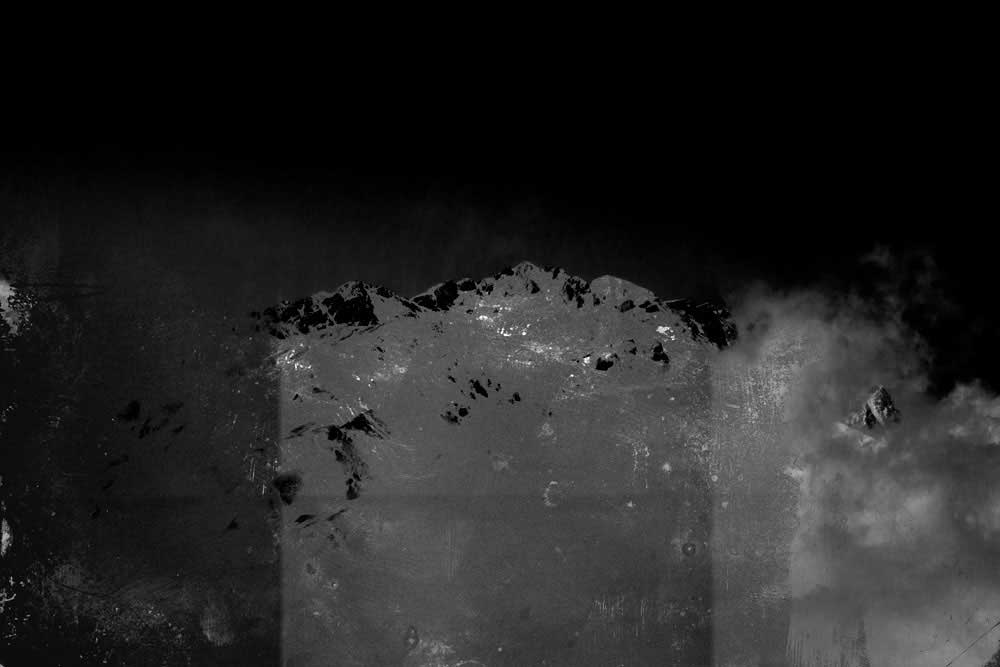In his latest series for Monkeyphoto, Alessandro Ciccarelli presents “Erehwon, CaMg(CO3)2/CaCO3”, 26 black and white photographs published in the form of posterzine, or rather, prints on large format sheets (45x30cm).
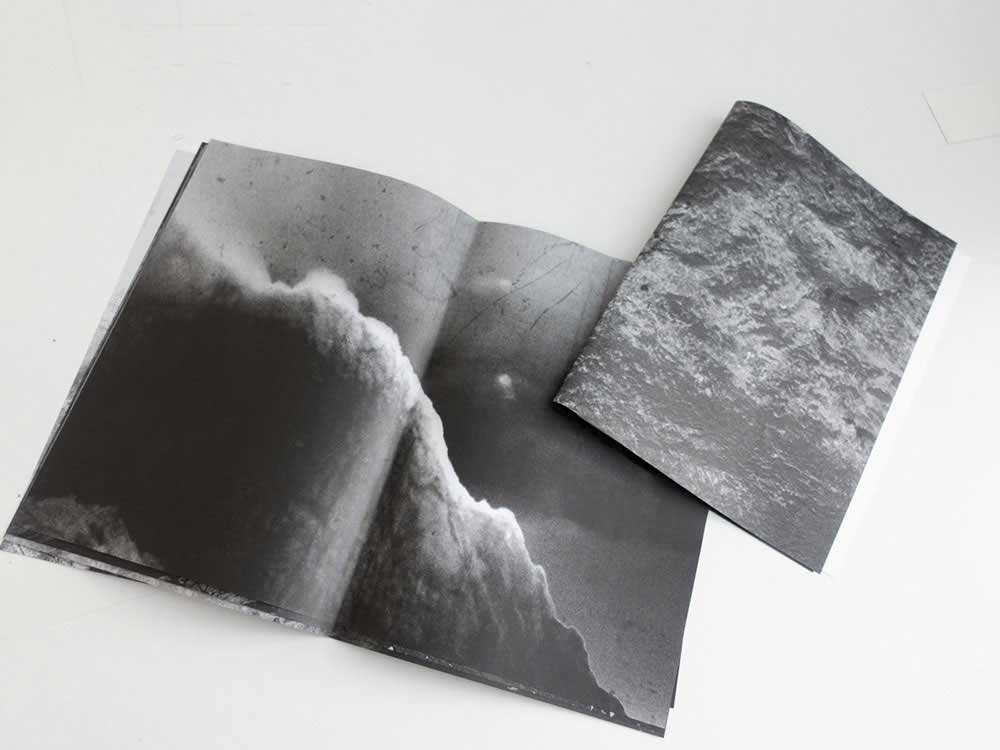
As to the reader’s whim, the sheets can take the form of posters, or can be equally appreciated by leafing through the pages from beginning to end. The folded posterzine creates a sequence of diptychs decided on by the author. However, with no binding, it is also possible to create a personal sequence, a composition of different combinations and diptychs.
In the middle of the posterzine one finds the literary contribution of Giusi Palomba, a text that considers the elusive relationship between the photographer’s eye and the image. Through a lexicon that draws on geology, but with a dreamlike register far from the norms of meaning, the text dares to take a possible approach to the power and hostility of nature. It is a discourse with gravity, atmospheric agents and time, the inadequacy of human undertaking in the face of nature’s prowess.
The subjects of the photographic series are mountain peaks shrouded in fog, as well as concretions, furrows in the rock, dark vertical walls and boulders isolated in the darkness. There are no geographical indications or tangible signs to recognize places, it is obviously a mental process. Physical coordinates rise up through interior landscapes within the observer; places of thought, dark dreams or instances of desire. At this point even the title becomes deliberately vacuous, and thus conventional. Only the final epigraph seems to indicate a direction, in turn raising the sole question:
“Is the dream the desire?”
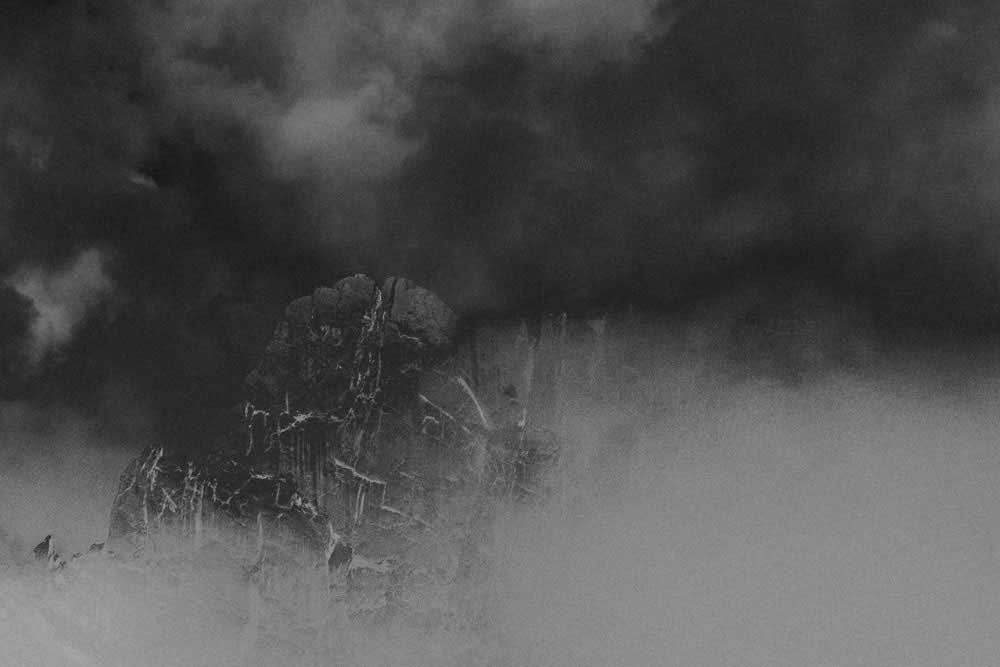
SEDIMENT
The geological composition of the wall determines the direction; direction of finite body, subject to gravity, moods, clean cuts. You’re speaking to me as if the mountain were a place of thought, so I wonder: will I also be able to go back to that place? The one in which weights have different measures, in which the miseries of the world, the betrayals of meaning, the time that counts, fade away or assume the form of insignificance? Still I remain too vulnerable to the massif: underneath there is tension, I imagine that it moves the faults and creates friction. The civil use of water connects this balsamic silence to the urban, where it will become polluted. Here the sediment is nothing but history, depth immortalizes dead organisms in fossils, their secret existence in conjectures, the past in the future.
GLACIATION
Depressions and valleys, the design of an ancient dance is handed down through the canyons. There in the ascent, arid and dry, spiritual ingenuities are not a given. Traveling light, running, do not exceed yourself in your doubt. I make a karst effort, I am as transparent as the ice, but below there are exponentially more powerful things than my efforts. I seek refuge. We will still be talking about wilderness, with a certain reluctance to trust, while the processes of millennia run through the subsoil. Being able to oxygenate is a conquest. Words, even when spoken, freeze in the air.
EROSION
It takes an extended time to understand the processes. The action of frost, snow, winds, landslides, and their exceptional consistency. We can’t even think of them, it’s too much. Linear digital time knows no seasons, it does without beats and rhythms. It is from this point on that we lose perspective, the place in the cycle, forced to repeat the compulsion. We fall, we think it’s comfort. We have forgotten everything about the hostility of emptiness. It’s just another goal of human arrogance. [Text by Giusi Palomba][Official Website]



